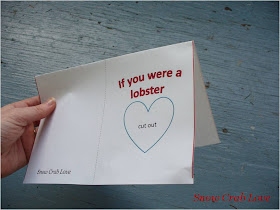When my big sister Amelia saw the Snow Crab Love logo, she told me she wanted it in t-shirt form. Actually, it started way back when she saw this goofy awesome picture of me from the NMFS summer trawl survey in '09:
the original design! although, admittedly, I am eating red king crab...
Amelia has a degree in elementary education, taught for a few years in public schools, and is now home schooling her 3 beautiful daughters. So, true to form, she turned her want for crabby t-shirts into a fun project for the kiddos. And she's letting me share the details with you!
First she had to gather all the materials (and she downloaded a jpeg of the Snow Crab Love logo):
extra fabric paint she had on hand from past projects
Second, she taped the print-out to the window so that the girls could color in the image with those fabric crayons. You can see that it's been placed so that their drawing will be a backwards version of the original image, and she used the window to make it easier to see. This way, when it is ironed onto their shirts, it will face the right direction!
(Yes, this was in February. And no, that's not what
my backyard looks like in February either.
Yes, I am a bit jealous!)
Coloring! And, Amelia says, "Pressing hard"!
A finished drawing, ready for the heat!
Third, Amelia ironed the images onto each girls' shirts. I would suggest just following the directions that come with whichever product you end up using.
this is where adult supervision is handy
ironed on and ready for some glitter paint!
Fourth, everyone broke out the fabric paints for those special finishing touches:
Boo's sparkly shirt
(my sister uses little nicknames for her girls)
Bug's peaceful crab shirt
Bear's sweet shirt - I love the purple bow!
Amelia's shirt, because she's not going to let the girls have ALL the fun!
Great job girls! And thanks, Amelia, for sharing the how-to. These look amazing (WAY better than mine - I guess I'm going to have to make a new one)!













































